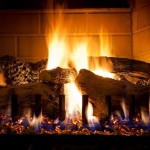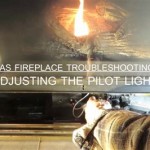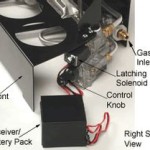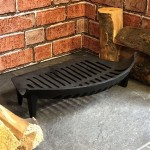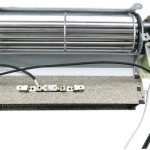The Enduring Appeal and Practicality of the Fire Drum Fireplace
The fire drum fireplace, a robust and often portable heating solution, offers a blend of rustic charm and functional utility. This type of fireplace, typically constructed from heavy-gauge steel drums or repurposed containers, has gained traction among outdoor enthusiasts, homeowners seeking supplementary heating options, and those drawn to its distinctive aesthetic. Its durability, relatively simple design, and potential for customization contribute to its enduring appeal.
The conceptual foundation of the fire drum fireplace rests on the principle of efficient wood burning within an enclosed space. The drum's shape facilitates heat radiation, warming the surrounding environment. Variations in design, including the addition of doors, chimneys, and cooking surfaces, expand its functionality beyond simple heating. This article will explore the key characteristics, practical considerations, and safety precautions associated with fire drum fireplaces.
Understanding the Construction and Design
The core element of a fire drum fireplace is, unsurprisingly, the drum itself. These drums are typically constructed from steel, chosen for its ability to withstand high temperatures and its structural integrity. Drum size varies, impacting the fireplace's heating capacity and portability. Smaller drums may be suitable for camping or patios, while larger drums are better suited for heating larger outdoor areas or serving as stationary fixtures.
The construction process often involves modifying the drum to create openings for air intake, fuel loading, and smoke exhaust. A common design includes a hinged door for accessing the fire chamber, which allows for controlled fueling and ash removal. A chimney or flue is typically added to channel smoke away from the immediate area, improving air quality and reducing the risk of smoke inhalation. The material used for the chimney is crucial; it must withstand high temperatures and resist corrosion from acidic combustion byproducts.
Beyond the basic structural elements, numerous design enhancements can be incorporated. Some fire drum fireplaces feature internal baffles or secondary combustion chambers, designed to improve burning efficiency and reduce emissions. Others include cooking surfaces, such as grates or hot plates, transforming the fireplace into a versatile outdoor cooking appliance. The addition of legs or a stand elevates the drum, providing a more comfortable working height and preventing direct heat transfer to the ground below.
The choice of materials for construction and modification is critical. Steel thickness, weld quality, and the use of heat-resistant paints or coatings all influence the fireplace's longevity and safety. Repurposed drums require careful inspection to ensure they are free from hazardous residues or coatings that could release toxic fumes when heated. Proper preparation and cleaning are essential before converting a used drum into a fireplace.
Practical Considerations and Applications
The practical applications of a fire drum fireplace are diverse, ranging from recreational to utilitarian. Its portability makes it a popular choice for camping, tailgating, and outdoor gatherings. The fireplace provides a source of warmth and light, creating a focal point for social interaction. When equipped with a cooking surface, it can be used to prepare meals, expanding its utility in outdoor settings.
For homeowners, a fire drum fireplace can serve as a supplementary heating source for patios, decks, or workshops. Its radiant heat output can extend the usability of outdoor spaces during colder months, allowing for year-round enjoyment. In situations where conventional heating systems are inadequate or unavailable, the fireplace can provide a reliable source of warmth. However, it's crucial to adhere to local regulations regarding open fires and ensure proper ventilation to prevent carbon monoxide buildup, especially in enclosed or semi-enclosed spaces.
The maintenance of a fire drum fireplace involves regular cleaning and inspection. Ash accumulation should be removed frequently to maintain proper airflow and prevent the buildup of combustible materials. The chimney should be cleaned periodically to remove creosote, a flammable byproduct of wood combustion. Inspecting the welds and structural components for signs of wear or corrosion is essential for ensuring the fireplace's continued safety and functionality.
Fuel selection is another important consideration. Dry, seasoned wood burns more efficiently and produces less smoke than wet or green wood. The type of wood also affects heat output and burn time. Hardwoods, such as oak and maple, generally provide more heat and burn longer than softwoods, such as pine and fir. It's advisable to avoid burning treated wood, painted wood, or other materials that could release harmful chemicals when burned.
The placement of the fire drum fireplace is also crucial. It should be located on a level, non-combustible surface, away from flammable materials such as dry grass, leaves, or overhanging branches. Adequate clearance should be maintained around the fireplace to prevent the accidental ignition of nearby objects. When using the fireplace on a deck or patio, it's important to verify that the surface can support the weight of the drum and the fuel, and to consider using a heat-resistant mat to protect the surface from radiant heat.
Safety Precautions and Responsible Use
Operating a fire drum fireplace safely requires adherence to a set of essential precautions. First and foremost, constant supervision is necessary when the fireplace is in use. Never leave a burning fire unattended, and ensure that a responsible adult is always present to monitor the flames and manage the fire.
Having a readily available source of water or a fire extinguisher is crucial for extinguishing the fire in case of an emergency. A bucket of sand can also be used to smother the flames. It's important to familiarize oneself with the proper use of fire extinguishers and to know the location of water sources.
Children and pets should be kept at a safe distance from the fire drum fireplace to prevent accidental burns or injuries. A safety barrier or fence can be erected around the fireplace to create a designated safety zone. Educating children about the dangers of fire and the importance of staying away from the fireplace is essential.
When disposing of ashes, it's important to ensure that they are completely cool before placing them in a container. Hot ashes can ignite combustible materials, even after several hours. Store ashes in a metal container with a tight-fitting lid, away from flammable materials. Consider sprinkling water on the ashes to ensure that they are completely extinguished.
Carbon monoxide poisoning is a serious risk associated with incomplete combustion. Ensure adequate ventilation when using a fire drum fireplace, especially in enclosed or semi-enclosed spaces. Install a carbon monoxide detector to provide an early warning of potentially dangerous levels of the gas. Symptoms of carbon monoxide poisoning include headache, dizziness, nausea, and shortness of breath. If anyone experiences these symptoms, immediately move them to fresh air and seek medical attention.
Following local regulations and ordinances regarding open fires is essential. Many municipalities have restrictions on the types of fires that are permitted, the times when fires can be burned, and the materials that can be burned. Familiarize yourself with these regulations and ensure that you are in compliance before using a fire drum fireplace.
Regularly inspect the fire drum fireplace for signs of damage or wear. Cracks, rust, or weakened welds can compromise the fireplace's structural integrity and increase the risk of accidents. Repair any damages promptly to maintain the fireplace's safety and functionality. If the fireplace is beyond repair, it should be disposed of properly.
By adhering to these safety precautions and practicing responsible use, the risks associated with fire drum fireplaces can be minimized, allowing for the safe and enjoyable use of this versatile heating and cooking appliance. The inherent dangers associated with open flames demand respect and careful planning to ensure the well-being of individuals and the surrounding environment.

Malm Fire Drum 2 32 Matte Black Freestanding B Vent Gas Fireplace Us

Fire Drum 3 Woodburning Fireplace With Screen In Porcelain Capo Fireside

Manual Driving Made Easy Www Manualdrivingmadeeasy Com Servicing Mount Mt Waverley And Surrounding Suburbs Of Melbourne A Diy Fire Pit Outdoor

Malm 32 Fire Drum 2 Freestanding Wood Burning Fireplace With Screen Us

Malm Fire Drum 2 W Screen Mid Century Modern Fireplace Smokey Mountain Fireplaces

Fire Drum 2 Malm Digs

Drum 20 Img 3366 Diy Wood Stove Backyard Fire Burner

Malm 32 Fire Drum 3 Freestanding Wood Burning Fireplace With Screen Us

Make Your Own Fire Pit With Just A Few Recycled Materials Decor Diy Outside Pits

Charming Chimineas
Related Posts

